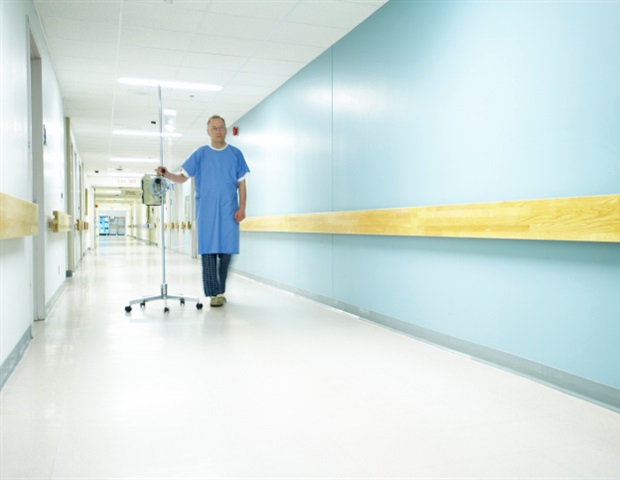
While debating the pros and cons of robotically assisted lung transplantation, Albert Jauregui, MD, PhD told attendees at the Annual Meeting and Scientific Sessions of the International Society for Heart and Lung Transplantation (ISHLT), today in Prague that the time for robotic surgery is now.
Although robots are commonly used to assist in surgery, robotically assisted surgery is not routinely used for lung transplants. Approximately 4,600 lung transplants are performed annually around the world.
We’ve been doing robotically assisted, minimally invasive surgeries for lung cancer for the last several years. Lung cancer patients are already benefiting from robotic platforms to make their surgery less invasive, but patients who need a lung transplant are still being offered an aggressive surgery. For our team, it didn’t make any sense. We felt like things had to start changing.”
Dr. Albert Jauregui, Chief of the Thoracic Surgery and Lung Transplant Department, Vall d’Hebron University Hospital in Barcelona, Spain
In February 2023, Dr. Jauregui’s team performed Spain’s first robotically assisted single-lung transplant; three months later they performed a second single-lung transplant. Both patients showed good improvement in the postoperative period and needed only mild medication for the pain caused by the surgery.
“We accomplished our main objective for this minimally invasive approach, which was to reduce the size of the surgical incision and the need for powerful pain drugs that interfere with wound healing,” said Dr. Jauregui. “We are happy with the outcome of the first lung transplant patients with robotic surgery, but we have to continue working to be able to offer this type of surgery to more patients.”
Dr. Jauregui’s team spent hours in the lab performing robotically assisted surgeries with synthetic lungs before moving to large animal models. By deflating the lung and relying on the skin’s flexibility, surgeons discovered they could use a smaller incision below the sternum to remove and insert the lungs.
“Lung transplants are a very tough procedure, from donor selection through the surgery to the postoperative period,” said Dr. Jauregui. “Unlike other organs that are all protected inside the body, the lungs are connected to the environment through breathing. It’s one of the most difficult organs to transplant.”
After the two successful robotically assisted lung transplants, Dr. Jauregui’s team began working with a medical device company to develop design robotic instruments specifically for lung transplantation.
“Our next goal is to perform a bilateral lung transplant,” he said. “We plan to perform five robotically assisted procedures this year and 10 next year.”
Another objective for Dr. Jauregui’s department is to disseminate the new technique to more lung transplant programs.
“We believe that reducing surgical aggression is better for patients, however, we need a greater number of procedures to confirm our theory,” he said.
Co-presenter Konrad Hoetzenecker, MD, PhD, director of the Vienna Lung Transplant Program in Austria, acknowledged that “keeping the incisions as small as possible has reduced surgical trauma in lung cancer patients, attempting to do the same with lung transplants sounds at first sight reasonable.”
“However, the technique of robotic lung transplantation is premature, and it is questionable whether a robotic platform will ever be suitable to support lung transplantation,” he said. “Unlike other thoracic procedures, surgical time is an essential factor for the functionality of the implanted donor organ. Utilizing a robot in lung transplantation means longer operation times and this poses a significant threat to graft function and the survival of a patient.”
Dr. Hoetzenecker underlined that robotic platforms need significant further development before they could eventually become an option for lung transplantation.
Post Disclaimer
The information contained in this post is for general information purposes only. The information is provided by "Robotic lung transplantation: A paradigm shift in surgical approach "and while we endeavour to keep the information up to date.
Legal Disclaimer
We do not claim to cure any disease which is considered’ incurable ‘ on the basis of scientific facts by modern medicine .The website’s content is not a substitute for direct, personal, professional medical care and diagnosis. None of the medicines mentioned in the posts ,including services mentioned at "medicineguide.us" should be used without clearance from your physician or health care provider.
Testimonials Disclaimer– : Results may vary, and testimonials are not claimed to represent typical results. The testimonials are real, and these patients have been treated with homeopathy treatment from our clinic . However, these results are meant as a showcase of what the best, Medicine can do with their disease contions and should not be taken as average or typical results.